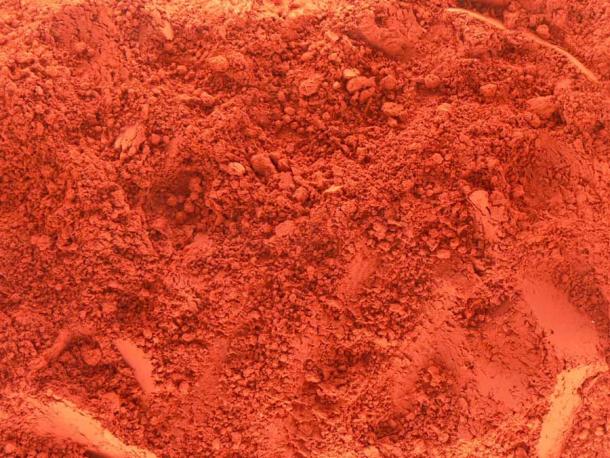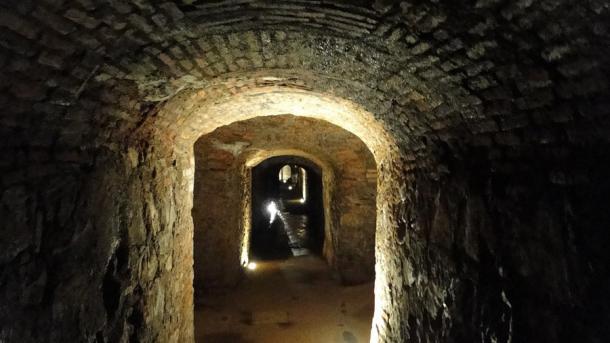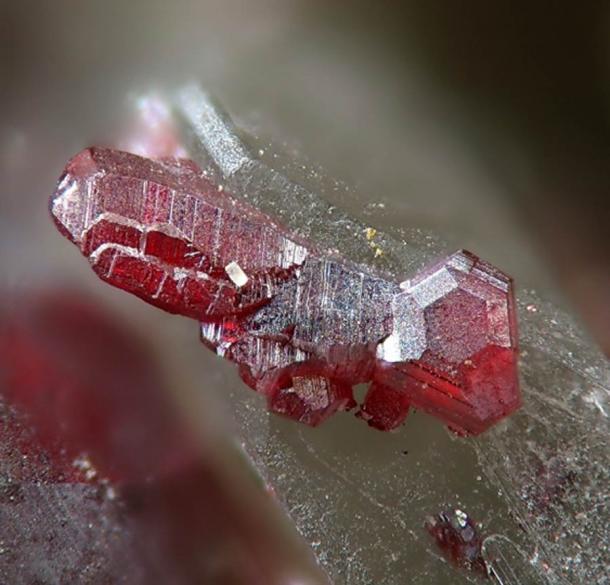A team of 14 biologists, chemists, physical anthropologists and archaeologists from the University of Seville have published a new study in the International Journal of Osteoarchaeology . The researchers have explored the historic interaction between humans and mercury, Hg, and have found that prehistoric Iberian farmers may have been sniffing the vapors to get ecstatic during rituals. If so, this would explain the evidence of mercury poisoning they’ve found in ancient Spain and Portugal.

Study claims that mercury poisoning spike evidenced in human bones from the Copper Age in Iberia is evidence of the use of cinnabar, seen in the image in powdered form, during ancient rituals. ( ReSeandra / Adobe Stock)
The Largest Study of its Type Ever Conducted
The multi-disciplinary research team analyzed samples from 370 individuals taken from tombs at 23 archaeological sites in Spain and Portugal. The samples dated from the Neolithic, Copper Age and Bronze Age. According to a report in Eureka Alert , the new paper which is entitled “The use and abuse of cinnabar in Late Neolithic and Copper Age Iberia,” represents “the largest study ever carried out” on the presence of mercury in human bones .
The new paper reveals a lot of hitherto unknown data pertaining to historical mercury. However, the overall conclusion was that mercury exposure was greatest at the beginning of the Copper Age, between 2900 and 2600 BC.
The study showed that in Cooper Age, Iberian people’s bones held levels of up to “400 parts per million (ppm),” against normal mercury levels in human hair which according to WHO should be no higher than 1 or 2 ppm. The paper states that these enormous amounts of toxic mercury, also known as quicksilver, caused “a high level of intoxication that must have severely affected the health of many of those people.”

The cinnabar mine at Almadén in central Spain represents the largest cinnabar deposit in the world and is a UNESCO World Heritage site. It’s exploitation began about 7,000 years ago. (Rafael Tello / CC BY-SA 4.0 )
What Caused the Copper Age Mercury Spike
The exploitation of the Almadén cinnabar began in the Neolithic about 7,000 years ago. Located at Almadén in central Spain, this World Heritage UNESCO site represents the largest cinnabar deposit in the world. The new study says that by the dawn of the Copper Age, 5,000 years ago, cinnabar had attained great “social value, with a character that was both sacred, esoteric and sumptuous.”
The new study revealed that this mercury spike was caused by an increase in the use of cinnabar (HgS). When processed, this cinnabar, or mercury sulfide, transitions into a bright red powder that was traditionally used to make long lasting pigments, paints and stains. Thus, it was used to coat sacred artifacts, and even people.

Cinnabar, or mercury sulfide, from the Almadén Mine in Spain. (Christian Rewitzer / CC BY-SA 3.0 )
Folk Were Possibly Consuming Mercury Fumes to Get High
Let’s look at that sentence in the paper again that said cinnabar was “sacred, esoteric and sumptuous.” Firstly, it is known cinnabar was “sacred” because prehistoric stone tombs in Portugal and Andalusia have been discovered coated with cinnabar powder paint.
Furthermore, sacred figurines have been found covered in the brilliant red paint. The powder was even spread over corpses to assist in what can be called “sacred”, or controlled, decomposition. This suggests cinnabar was heavily associated with the afterlife, and was thus deemed as sacred.
Secondly and thirdly, the researcher’s choice words: “esoteric and sumptuous.” Being in such close proximity to cinnabar, ancient people must have noticed that it changed their states of consciousness and produced deeply esoteric effects . However, the word “sumptuous” was used in that paper because the researchers think the people either accidentally inhaled, “or consumed it.” Could it really be that Copper Age peoples were tripping thanks to cinnabar, and getting mercury poisoning as a result?
A Flowing Metal and Blood Red Rock of the Gods
A 1995 study published on NCBI showed that about 2,000 years ago in India, mercury was believed to be “a drug of longevity, prior to alchemy.” Alchemy in India later peaked with the production of blood red “cinnabar-gold” or Makaradhwaja. In 2015, Mexican archaeologist, Sergio Gómez, discovered liquid mercury at the end of a tunnel beneath the Pyramid of the Feathered Serpent , the third largest pyramid of Teotihuacan in central Mexico.
All over the ancient world, mercury and its alchemical derivatives were associated with the gods and with the passage to the afterlife. These ultra high levels of mercury discovered in the Iberian Copper Age people raised the suspicion that vaporized cinnabar powder was maybe “inhaled or eaten” in ritual environments. This idea is supported in the fact that cinnabar had such deep such esoteric value, evidenced by the fact that it was used to cover dead people and to coat burial chambers and tombs.
Top image: Could the Mercury poisoning spike discovered in Iberian Copper Age bones be evidence that cinnabar powder was ingested during rituals? The healing art in pre-historic times, by Ernest Board. Source: Wellcome Trust / CC BY 4.0
By Ashley Cowie
Related posts:
Views: 0
 RSS Feed
RSS Feed















 November 19th, 2021
November 19th, 2021  Awake Goy
Awake Goy  Posted in
Posted in  Tags:
Tags: 
















